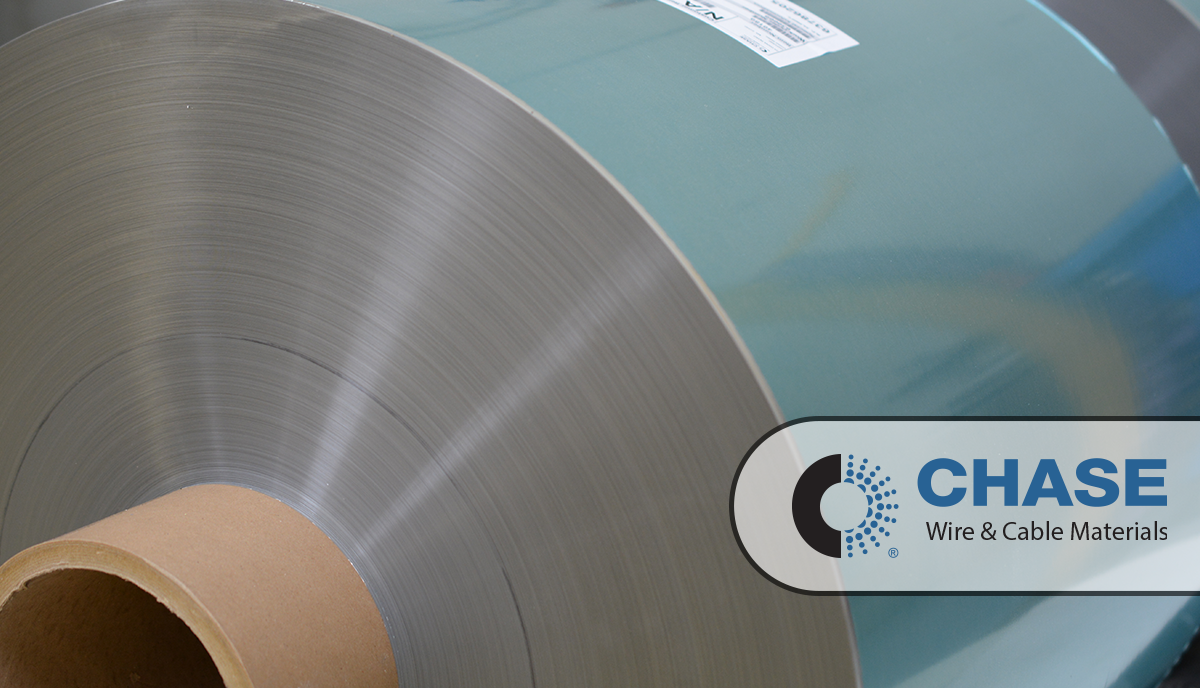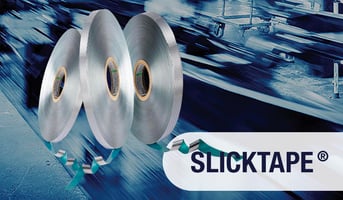Cable manufacturers can be plagued by efficiency losses and production delays due to tape breaks....
Splice Types & Why We Have Them?
 Chase Corporation has one of the most comprehensive lines of tape products for the wire and cable industry. Chase’s variety of tape constructions makes use of a significant number of component raw materials, including aluminum, polyester, copper, polypropylene, Kapton, and Nomex. As we work with customers to meet their specific item configurations, individual pads or rolls may have extensive lengths, with some over 20,000 feet. Due to this, we must utilize multiple master rolls and splice together material to achieve these put-ups. Chase also utilizes a diversity of gauges, or thicknesses, of raw materials. Such conditions necessitate numerous “splice types.”
Chase Corporation has one of the most comprehensive lines of tape products for the wire and cable industry. Chase’s variety of tape constructions makes use of a significant number of component raw materials, including aluminum, polyester, copper, polypropylene, Kapton, and Nomex. As we work with customers to meet their specific item configurations, individual pads or rolls may have extensive lengths, with some over 20,000 feet. Due to this, we must utilize multiple master rolls and splice together material to achieve these put-ups. Chase also utilizes a diversity of gauges, or thicknesses, of raw materials. Such conditions necessitate numerous “splice types.”
Chase is able to perform over a hundred splice types but does possess a “standard” splice construction that it developed for the products it supplies. Unless a customer requests a specific splice type, Chase provides spliced products using its standard splice and internal specifications.
By far, the most widely used splice method is the “butt splice” in which component raw materials “butt up to each other” -- with adhesive tape possibly used on one or both sides. There are many different “splicing tapes” that may be applied as the mechanical bond for the splice, depending on the requirements of the finished tape product and its final application. A single-sided taped splice will have the thinnest profile vs. a double-sided taped splice.
In some cases, maintaining the continuity of the metallic (aluminum or copper) side of the tape for shielding/grounding purposes is called for, requiring a “continuity splice.” In this construction, the butt splice is made and a piece of aluminum, copper, or metallized tape is placed over the spliced ends as a “bridge” to ensure contact with both ends of the metallic side of the splice. Then a tape is placed over the bridge to provide the mechanical strength for the splice, while securing the metal bridge to maintain electrical continuity.
Related article: Addressing Common Slitting Questions
Another potential requirement is a very thin leading edge at the splice point, depending on the equipment that is being used to apply the tape. In cases like this, a “diagonal splice” is possible and may be specified. In this splice construction, instead of a butt splice that is cut at 90-degree angles to the tape, one side of the tape is cut at about 45 degrees and the opposing side is cut at about 225 degrees. These two ends are then butted up to each other, and splicing tapes are applied as appropriate. As noted, this design provides a splice with a narrow (pointed) leading edge to assist the processing of the finished tape in tight tolerance applications.
We also have the ability to produce ultrasonic splices on our water blocking tape products, which are made of non-woven materials. The raw materials make this splice technique feasible.
The overall use of splices is, of course, to provide our customers with the put-ups they require and to utilize our materials to their fullest extent, while meeting all the mechanical and electrical properties of the finished products we supply. Splices are intended to be “transparent-factors.” They will not interfere with how customers utilize and process the finished products that we supply; consequently, the splices are for the most part “invisible” in a customer’s process.
Some customer applications call for splice free material. We are able to provide splice free material for a number of products, but this does come with increased manufacturing challenges. Please be aware there may be limitations on lengths and put-ups with splice free material and the price of splice free material will be greater than material with splices.
Should you have a unique application that may require a special splicing technique, we would be happy to work with you to develop a solution.





